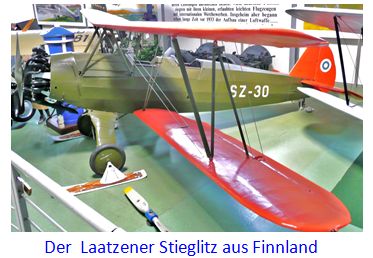Model of the month september 2018 Focke-Wulf
Focke-Wulf Fw 44 Stieglitz
The Stieglitz was the first creation of the designer Kurt Tank, who came to Focke-Wulf via jobs with Rohrbach and Albatros and became technical director in 1932. With the turning of the times in 1933 - the Nazis took over - he provided the "right spirit" in the factory and banned the company founder Henrich Focke from his own factory. Focke then devoted himself to the construction of helicopters, but that's another story, but an interesting one.
The Stieglitz was a wired biplane that was fully aerobatic, intended for initial training and aerobatic training. Next to the Fw 190, the fighter with air-cooled radial engine, the Stieglitz became the most-built Focke-Wulf aircraft. Its first flight took place in late summer of 1932. It necessitated some changes to the airframe to improve the flight characteristics. Then it became quickly well known

and popular, especially since the rearmament program of the Nazi regime required large quantities of such planes to built the new Luftwaffe. Due to the Versaille Treaty this was still a clandestine operation. The direct competitor to the Stieglitz was the Heinkel He 72 Cadet, but it never was produced in similar numbers. In the civilian field of aviation this plane became famous by the aerobatic pilots Graf Hagenburg and Gerhard Achgelis. This led to export orders and licenses to Argentina, Brazil, Bulgaria, Austria, and Sweden. Many aircraft were delivered to the Finnish Air Force. Those Finnish planes and the Swedish Fw 44s made up the basis for the Stieglitz fleet in Germany of today. Our Stieglitz here in our museum originates from Finland, too.
Technical specifications:
Wingspan 9.00 m, length 7.30 m, height 2.70 m, wing area 20.00 m², take off weight 900 kg, Siemens engine air-cooled 7-cylinder radial engine Sh 14A with 112 kW/152 hp, V/max 184 km/h, range 675 km, service ceiling 3900 m, crew 2.
.
